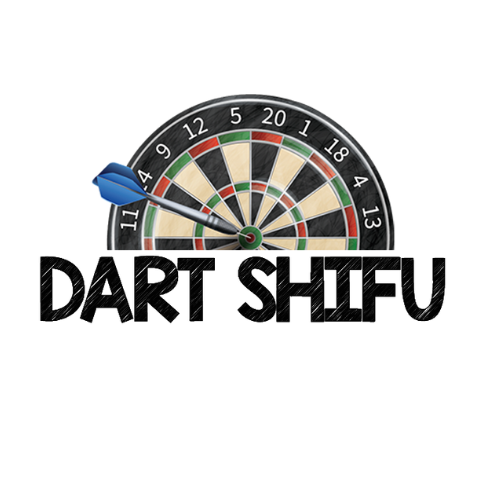To decide who goes first when playing darts, each player throws one dart, and the closest to the bullseye starts. When starting a game of darts, it’s essential to determine who goes first.
By following a simple method, players can easily decide the initial order of play. This decision sets the tone for the game and can impact the overall outcome. Whether it’s a casual game among friends or a competitive match, establishing a clear procedure for determining the starting player can ensure fairness and sportsmanship.
Understanding the process of determining the opening player provides a solid foundation for a successful and enjoyable darts game. We will explore a straightforward method for deciding who goes first when playing darts, promoting an exciting and equitable game for all participants.

Credit: darthelp.com
Importance Of Determining First Player
Deciding who goes first in a game of darts is crucial as it sets the tone for the entire match. The first player has the opportunity to set the initial score and gain a psychological advantage over their opponent. It also adds an element of excitement and anticipation to the game, making it an integral part of the overall darts experience.
Building Anticipation
Determining the first player creates a sense of anticipation and excitement among the competitors and the audience. The suspense of finding out who will have the first throw adds an extra level of engagement to the game, setting the stage for an enthralling darts match.
Establishing Fair Start
Determining the first player ensures a fair start to the game, eliminating any potential disputes or confusion regarding who should throw first. This fair and transparent process sets the ground rules for the match, promoting an atmosphere of sportsmanship and camaraderie among the players.
Traditional Methods
Deciding who goes first in darts is often settled through traditional methods. One common way is a simple coin toss, while another is to have each player throw one dart and the closest to the bullseye goes first. These methods add an element of fun and fair play to the game.
Traditional Methods When it comes to playing darts, deciding who goes first is an important step. There are several traditional methods that players commonly use to determine the starting player. Let’s explore these methods to find out which one suits your preference.Coin Toss
Using a coin toss is one of the simplest and most popular ways to determine who goes first. One player can call heads or tails while flipping the coin, and the other player will then have the remaining option. This method is quick, fair, and requires minimal preparation, making it a popular choice for deciding the starting player in a game of darts.Rock-paper-scissors
Another traditional method to settle the decision is by playing a round of rock-paper-scissors. Both players make a simultaneous hand gesture representing either a rock, paper, or scissors. It’s a fun and engaging way to determine the starting player and adds an element of excitement before the game even begins.Spin-the-dart
Spin-the-dart is a unique and entertaining method that involves spinning a dart on the dartboard. The closest player to the tip of the dart after it stops spinning gets the opportunity to start the game. This method adds an element of chance and skill, making it an exciting way to decide the starting player. Whether you prefer the simplicity of a coin toss, the quick decision of rock-paper-scissors, or the thrill of spin-the-dart, choosing a traditional method to decide who goes first when playing darts can add an extra layer of anticipation to the game.Strategy-based Approaches
In the game of darts, the decision of who goes first can significantly impact the outcome of the game. Strategy-based approaches can be applied to determine the order of play, adding an element of tactics to the game. By considering various factors such as highest score throws first and nearest to bullseye leads, players can employ strategic methods to gain an advantage before the first dart is even thrown.
Highest Score Throws First
One common strategy for determining the order of play in darts is to have the player with the highest score throw first. This approach can add an element of fairness to the game, as the player with the highest skill or previous success may be rewarded with the opportunity to start. Additionally, this method can also instill a sense of motivation for players to strive for higher scores, knowing that it could potentially grant them the advantage of throwing first in subsequent games.
Nearest To Bullseye Leads
An alternative strategy for deciding the order of play is to have players aim for the bullseye, with the one closest to the center earning the right to lead. This method not only adds an element of suspense and excitement to the game, but it also requires players to demonstrate accuracy and precision right from the start. By focusing on the bullseye, players can showcase their skill and composure under pressure, setting the tone for the rest of the game.
Fun And Creative Alternatives
When it comes to deciding who goes first in a game of darts, there are a variety of fun and creative alternatives that can add excitement and entertainment to your darts session. If you’re looking to spice up the traditional method of flipping a coin or playing rock-paper-scissors, consider trying out these unique ideas to determine the order of play.
Dart To The Bull
One classic way to determine the starting player in darts is to have each participant throw a single dart at the bullseye. The player who lands closest to the bullseye gets the coveted first turn. This method not only adds an element of skill to the decision-making process but also serves as a warm-up for the upcoming game.
Themed Challenges
Injecting some themed challenges into the mix can make the process of determining the starting player more engaging and entertaining. You could devise fun challenges that are related to the theme of the gathering or the personalities of the players. For example, you might have players compete in a “best pirate accent” contest or a “fastest finger to finish a darts-themed riddle” challenge. This not only adds an extra layer of enjoyment but also helps break the ice and create a lively atmosphere.
Randomized Selection Devices
If you want to introduce a touch of randomness into the decision-making process, consider using specialized devices to pick the starting player. This could involve options like a spinning wheel with the participants’ names, a custom dart-throwing robot, or even a mini electronic game that randomly selects the first player. Incorporating technology or unique devices can add a futuristic and unpredictable element to the experience, making the decision process more intriguing.
Frequently Asked Questions On How To Decide Who Goes First When Playing Darts
How Do You Decide Who Goes First In Darts?
To decide who goes first in darts, players can take turns throwing a single dart with their non-dominant hand and the closest to the bullseye goes first.
What Is The Popular Method To Determine The Order In Darts?
A widely used method to determine who goes first in darts is through a quick game of “closest to the bullseye” where each player throws a single dart aiming for the bullseye.
Can You Suggest A Fair Way To Decide The Order Of Play In Darts?
A fair way to decide the order of play in darts is to have players each throw a dart aiming for the bullseye, with the closest darts determining the play order.
Are There Other Methods To Determine Who Starts In Darts?
Another method to determine who starts in darts is to use a coin toss, where the winner of the toss gets to choose whether to start or let their opponent start.
Conclusion
So, the next time you and your friends are deciding who goes first in a game of darts, use these simple and fun methods to keep the competition fair and enjoyable. Whether it’s a classic game of “closest to the bullseye” or something as simple as a coin toss, the key is to keep it lighthearted and have a good time.
Happy dart throwing!


